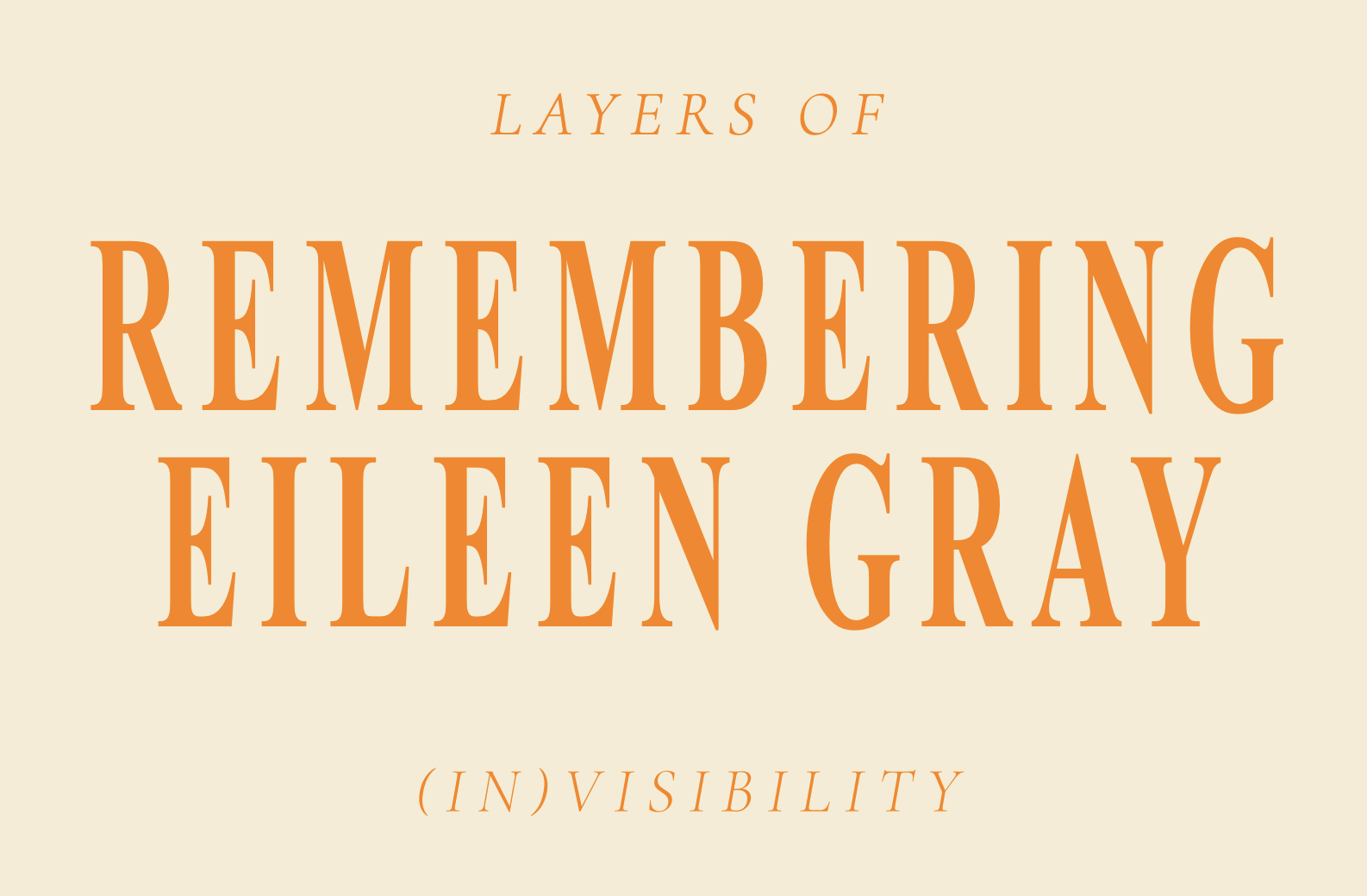


My Acquaintance with Eileen Gray
”Shortly before her death she burned almost all the letters and photographs that concerned her personal life. The discretion she had manifested all her personal life prevented her from leaving any traces, except in her work.”
Peter Adam
August 2013, I am 21 years old and a first year architecture student at Chalmers University of Technology in Gothenburg, Sweden. I have been studying architecture in London the year before, but this is my first meeting with the Swedish education. The experiences I have, make me feel encouraged that this is what I want to do, to study in a creative field with people like myself, with whom I share the interest in architecture and interior design. Soon I will understand that the education here will be something different from what I have imagined.
The first semester we are taking the course, Architecture History, and for many of us this is our first encounter with the subject. When only a handful women architects are mentioned throughout the course, among hundreds of men, it certainly creates a sense of frustration. Either there were very few (almost none) women architects active before the 21st century or the women architects simply did not make it into neither the history books nor the history lectures. It is indeed difficult to accept any of it. What is maybe even more difficult to understand is the fact that none of the teachers comment on the lack of representation in the course.
As a direct reaction to this, a student group with first- and second year students is formed. We call ourselves, Genusgruppen (The Gender Group), today Jämlika Arkitektstudenter (Architecture Students for Equality). The first meetings are tentative, even if we all share the same belief, that the underrepresentation of women architects in the course is the result of a structural problem in the field of architecture, we do not know how to address it, yet.
The following years will teach me a lot about gender issues within architecture, both at the universities in Sweden, at the offices and in the history books. The Gender Group establish a long-term dialogue with the academia, arrange theme days for students and teachers with workshops, lectures and discussions. We draw attention to, not only the lack of historic women architects in the history course but also the lack of women tutors, professors and teachers, and finally we get to develop the course, Architecture and Gender.
I am forever grateful to my colleagues and friends in the Gender Group who gave me perspectives on architecture that I would not have got elsewhere in the academia at the time. We shared a vision of a more inclusive education and today, when I look back on what we wanted to accomplish I understand that this was very much the beginning of my search for my own role model. Even though the Gender Group was seen a welcomed initiative by both students and teachers the work was also met with resistance and ignorance.
My involvement in the group had a major influence on the projects I made. I addressed issues regarding heteronormativity in the planning and construction of housing, I implemented feminist design strategies in city planning, I explored the method of civil dialogue and I researched the bodily experience of space. But on the presentation days I often felt misunderstood and that the values I had been focusing on where overlooked or not taken seriously. There was little room for one’s own interpretation of a task and the student’s results were expected to look more or less the same. I believe that my struggle to find my place in the architecture school partly stemmed from the feeling that the education was not shaped for someone like me.
When Eileen Gray came into my life, I was a second year student. One evening I went to a book club gathering where we had read a few chapters in Katarina Bonnevier’s thesis, Behind Straight Curtains: Towards a Queer Feminist Theory of Architecture. The book was thick with a glossy cover in light blue picturing the living room of Eileen Gray’s building E.1027. Even though I had never heard about her before I realised, she was the one I had been looking for and longing for. I admired her architecture and design, I desired her sense of materiality and decadence, I was inspired by her unconventional way of living and I became obsessed with the stories about her. The thesis is a personal reflection on a woman that I got to call my heroine. It is also a reflection on my own position as a queer women architect in a context where I have struggled to find my place.